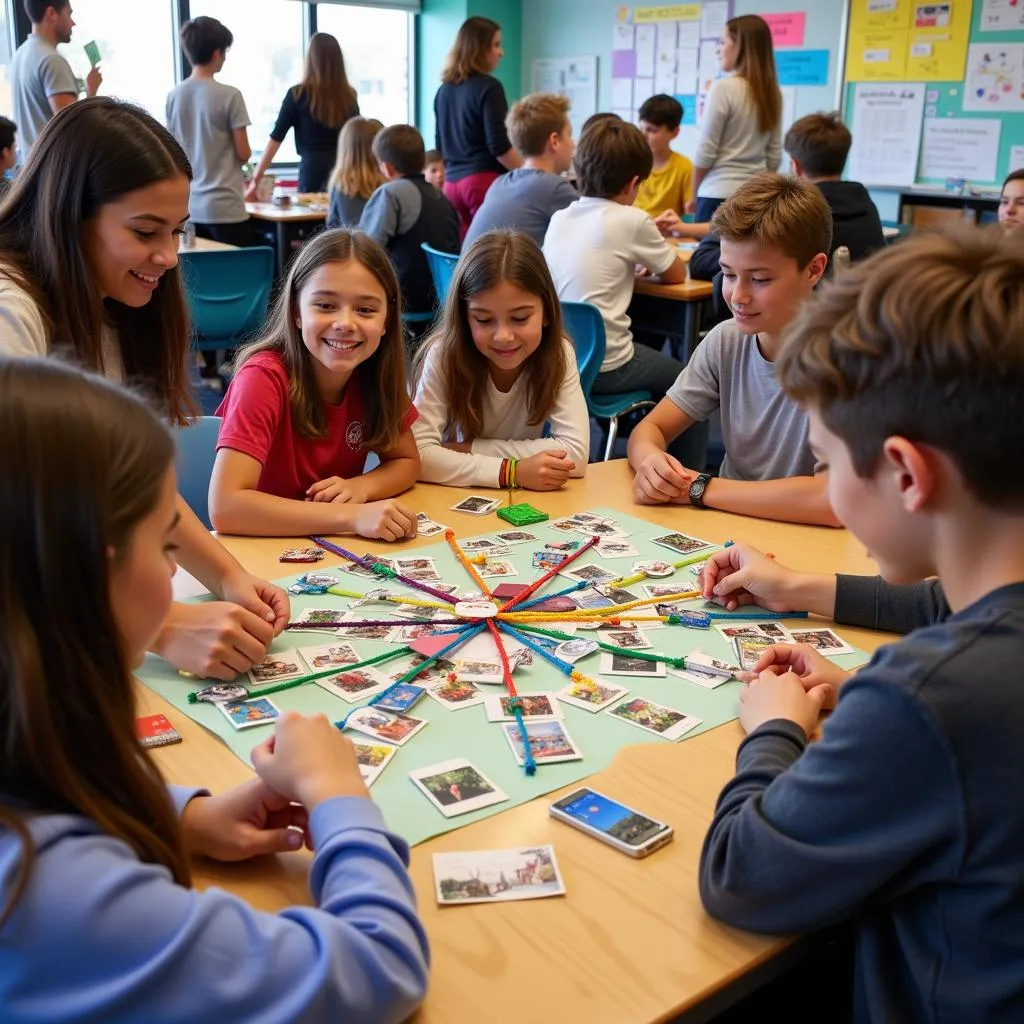Understanding the intricate relationships within an ecosystem can be a tough concept for young minds to grasp. But what if we could make it as appealing as a slice of cake? That’s where a “Food Chain Lesson Plan” comes into play. By using food, a universally loved theme, we can transform this complex ecological concept into a fun and engaging learning experience for students of all ages.
 Illustrative Diagram of a Forest Ecosystem Food Chain
Illustrative Diagram of a Forest Ecosystem Food Chain
Why Teach About Food Chains?
Food chains are the building blocks of a healthy ecosystem. They illustrate the interdependence of organisms within a specific environment, highlighting who eats whom and the crucial flow of energy. Teaching students about food chains allows them to:
- Grasp ecological relationships: Understanding the predator-prey dynamic and how energy transfers through different trophic levels.
- Appreciate biodiversity: Recognizing the variety of life within an ecosystem and the importance of each organism, no matter how small.
- Recognize human impact: Understanding how human actions, such as pollution or deforestation, can disrupt delicate food webs and have far-reaching consequences.
Creating an Engaging Food Chain Lesson Plan
A successful food chain lesson plan should be interactive, age-appropriate, and capture the students’ imaginations. Here’s how you can create one:
1. Start with the Basics
Begin by introducing the concept of a food chain using simple terms and relatable examples. Explain the different roles within a food chain:
- Producers: Plants that make their own food through photosynthesis.
- Consumers: Animals that obtain energy by eating other organisms.
- Herbivores: Plant eaters.
- Carnivores: Meat eaters.
- Omnivores: Eat both plants and animals.
- Decomposers: Organisms like bacteria and fungi that break down dead matter and return nutrients to the soil.
2. Get Hands-On with Activities
Interactive activities are key to solidifying understanding and making learning fun:
- Food Chain Games: Create a simple card game where students match organisms to their correct positions in a food chain.
- Food Web Construction: Use yarn and pictures of different organisms to build a visual representation of a food web, demonstrating the interconnectedness of multiple food chains.
- Ecosystem Dioramas: Encourage students to create miniature ecosystems showcasing different food chains using shoeboxes and craft materials.
3. Make it Relevant
Connect the concept of food chains to real-world scenarios:
- Local Ecosystems: Explore the food chains present in your local parks, gardens, or even your own backyard!
- Environmental Issues: Discuss how pollution or overfishing can disrupt food chains and the potential consequences for the entire ecosystem.
 Engaged Students Building a Food Web in a Classroom Setting
Engaged Students Building a Food Web in a Classroom Setting
4. Adapting for Different Age Groups
- Elementary School: Keep it simple and visually engaging. Focus on basic definitions and use familiar animals.
- Middle School: Introduce more complex food webs and explore different ecosystems. Incorporate research projects and presentations.
- High School: Delve into the intricate relationships within ecosystems, discuss trophic levels, and analyze the impact of human activities on food chains.
Food Chain Lesson Plan: A Recipe for Success
Teaching about food chains doesn’t have to be a dry and boring lecture. By incorporating creativity, hands-on activities, and real-world connections, you can transform it into an engaging and impactful learning experience. Remember to tailor your approach to the specific age group and learning styles of your students.
By fostering a love for the natural world and an understanding of its interconnectedness, we equip future generations with the knowledge and passion to become responsible stewards of our planet.
Frequently Asked Questions about Food Chains
1. What is the difference between a food chain and a food web?
A food chain shows a single pathway of energy flow, while a food web is a more complex illustration of multiple interconnected food chains within an ecosystem.
2. What happens if one organism in a food chain disappears?
The removal of any organism from a food chain can have ripple effects. Predators reliant on that organism for food may decline, while prey populations could increase, causing an imbalance within the ecosystem.
3. Are humans part of food chains?
Yes, humans are omnivores and participate in various food chains. We consume both plants and animals, and our actions have a significant impact on the delicate balance of ecosystems.
4. Why are decomposers so important in a food chain?
Decomposers play a crucial role in breaking down dead organic matter, releasing nutrients back into the ecosystem, and making them available for producers to utilize. They are essential for nutrient cycling and maintaining a healthy ecosystem.
5. How can I learn more about the food chains in my area?
Research local parks, nature reserves, or contact environmental organizations to gain insights into the specific flora and fauna of your region.
Need help with a customized food chain lesson plan or have more questions? Contact us at Phone Number: 02437655121, Email: [email protected] Or visit us at: 3PGH+8R9, ĐT70A, thôn Trung, Bắc Từ Liêm, Hà Nội, Việt Nam. Our dedicated customer support team is available 24/7 to assist you.